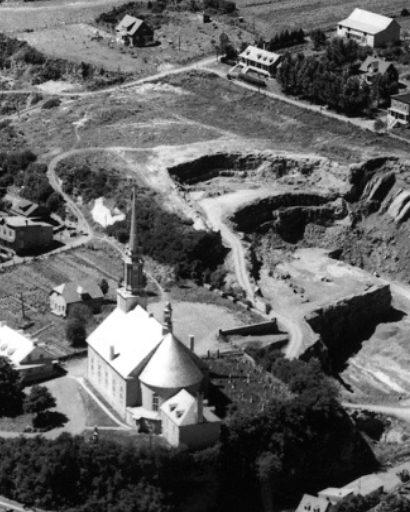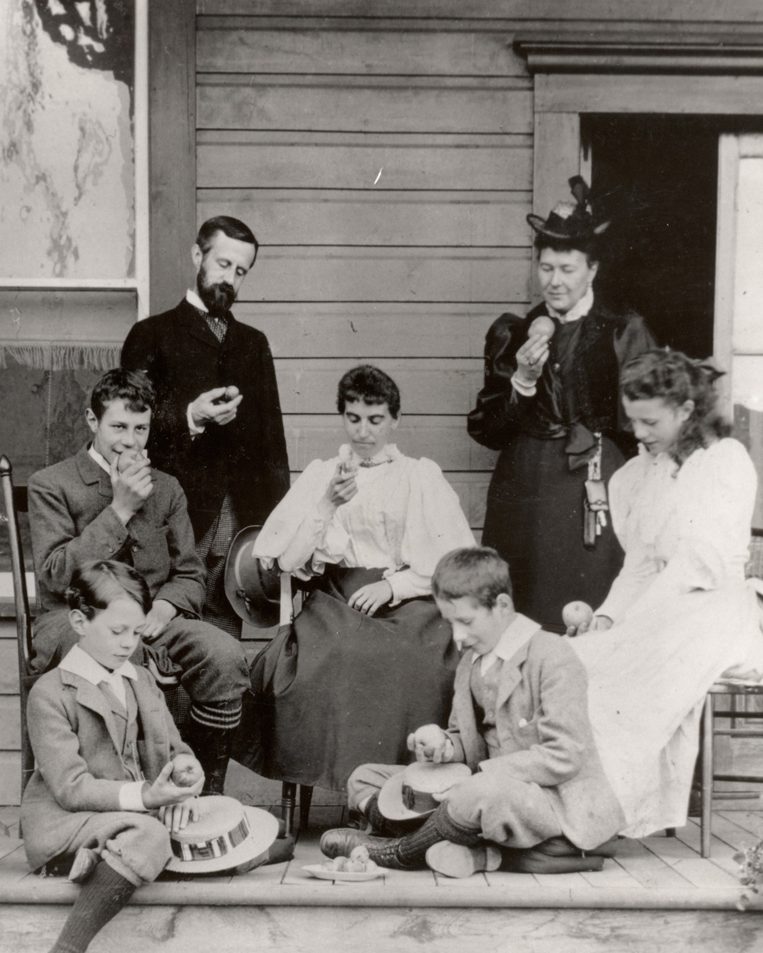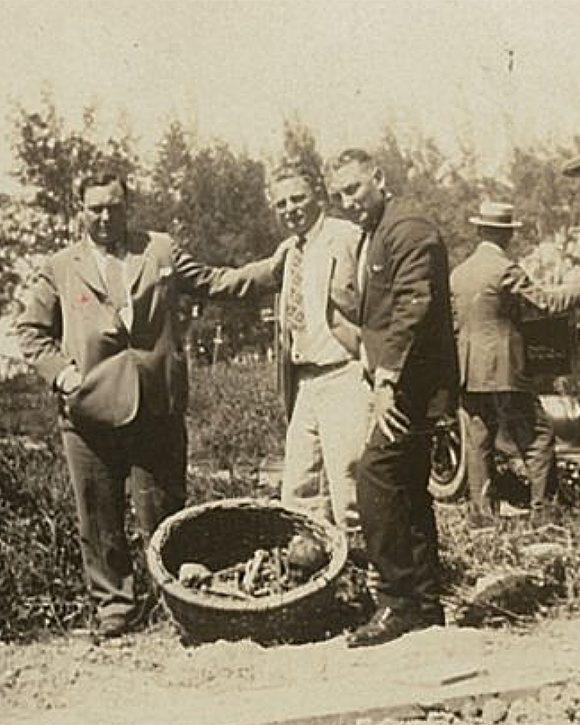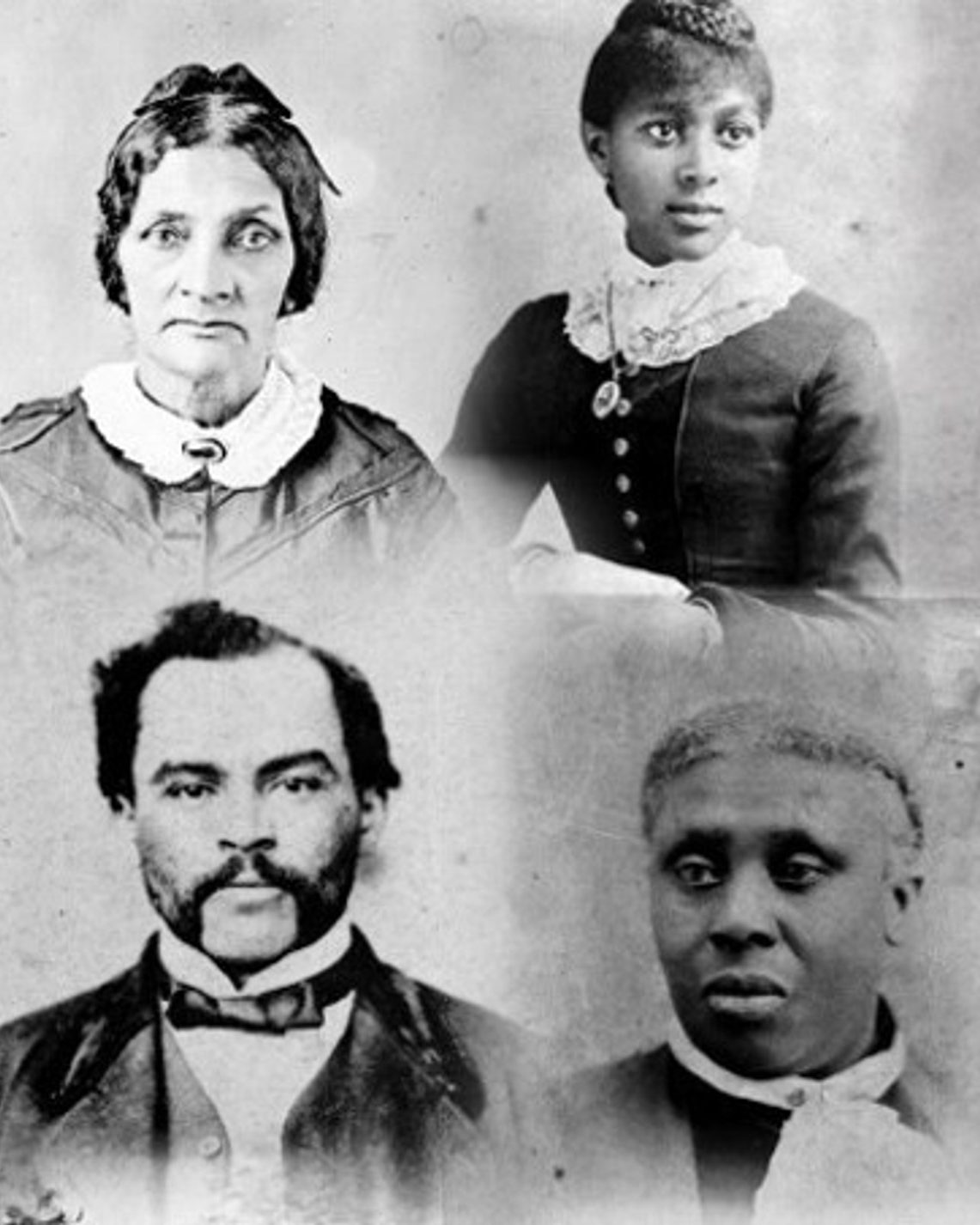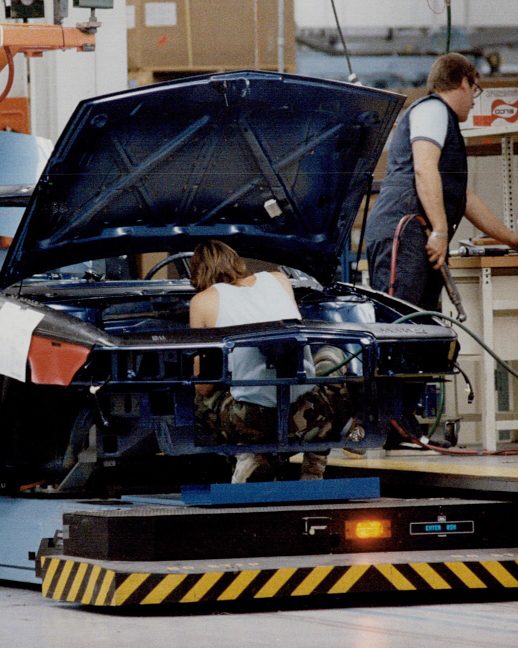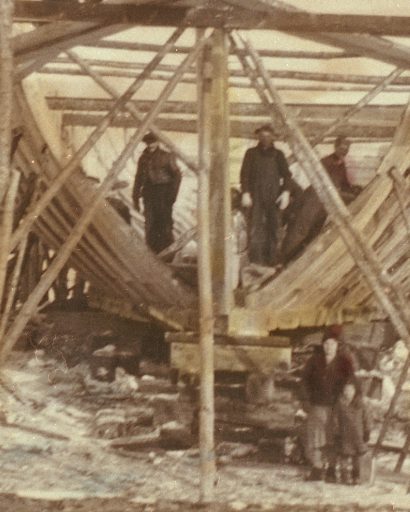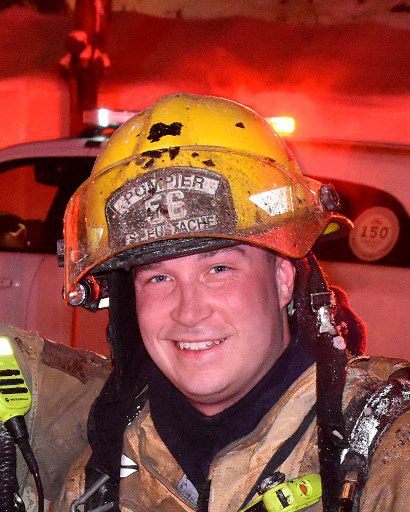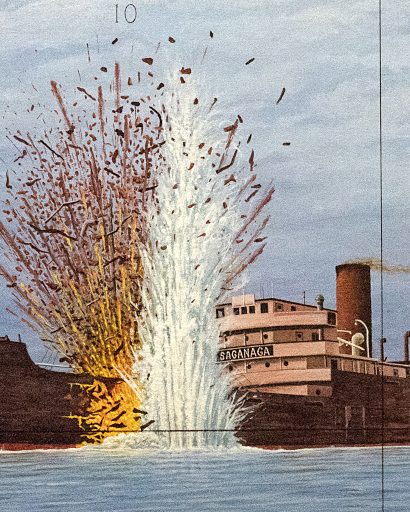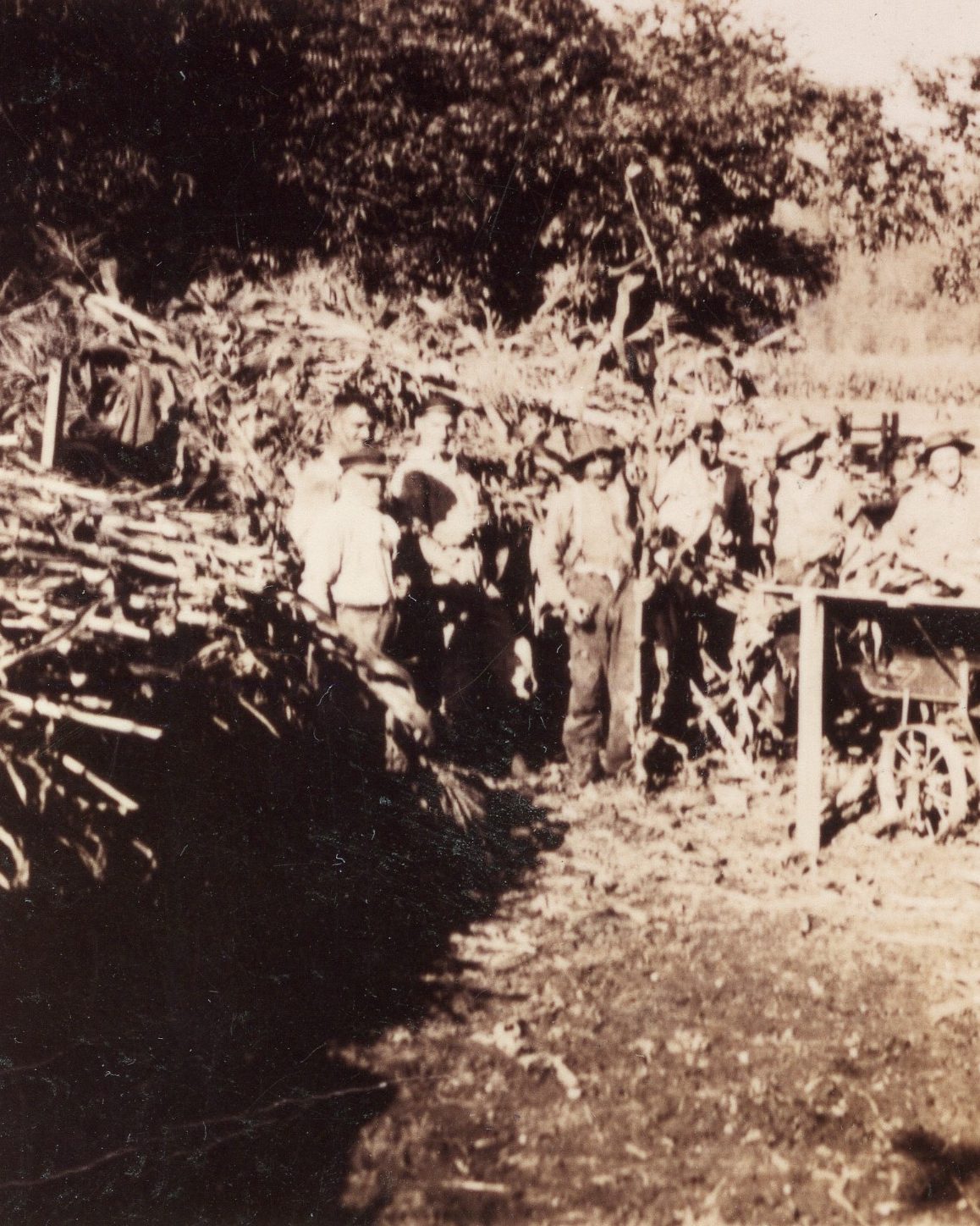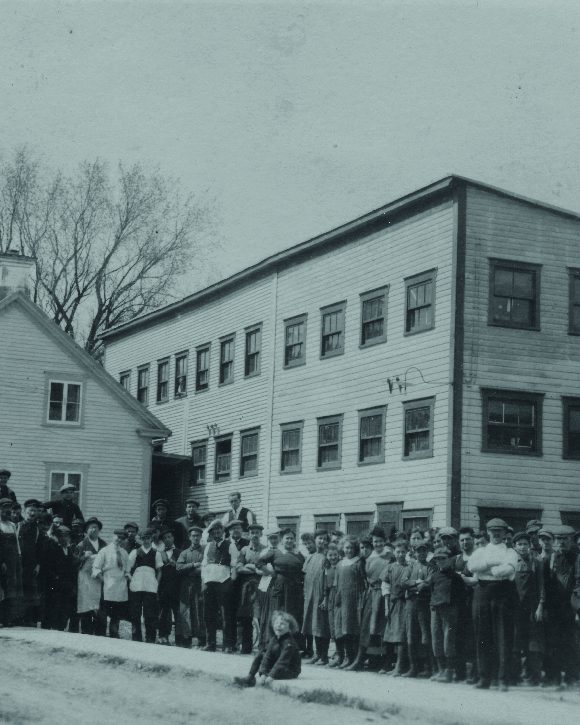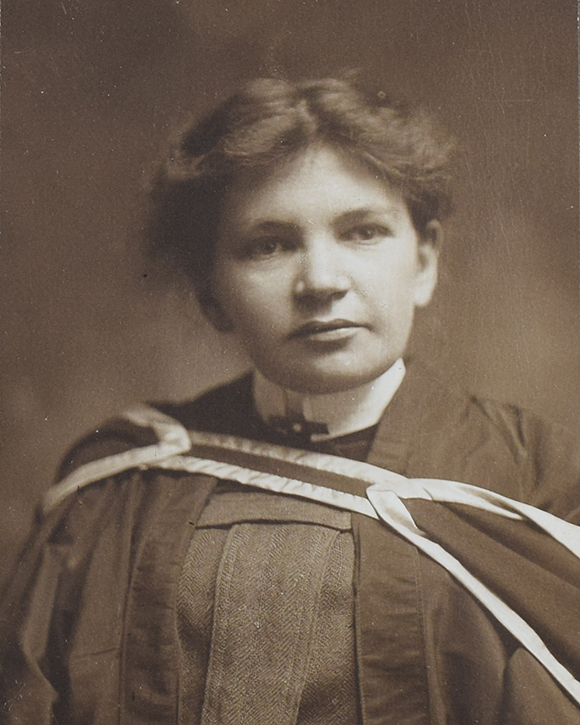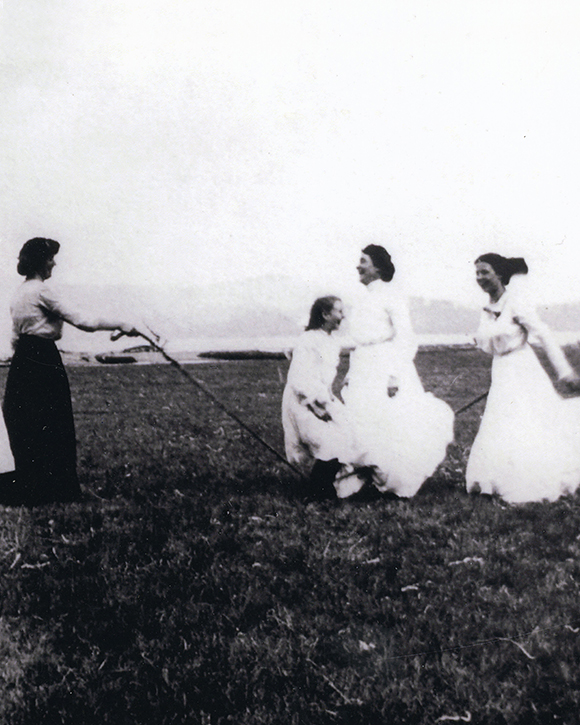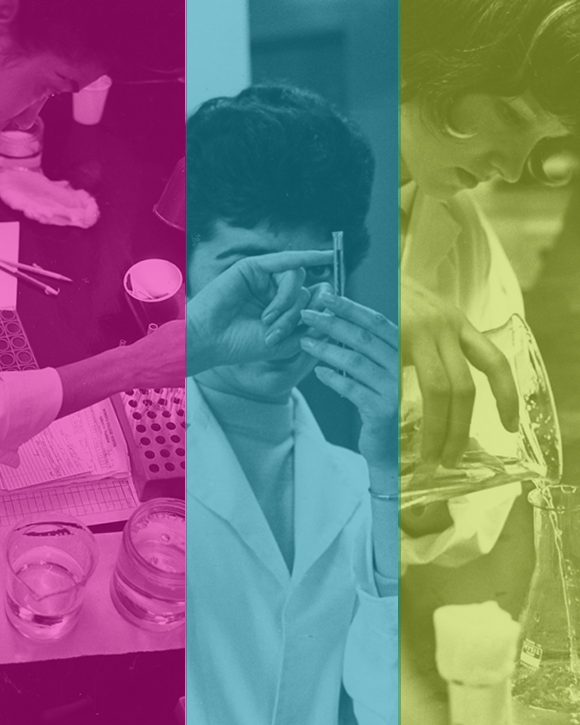Community Stories
Apply for an investment of $25,000. Using DMC’s website building platform, focus on content development and digital storytelling. Typically, Community Stories are produced in about 18-24 months.
Call closes: December 1, 2025
Status
open
Investment
$25,000
Projects featuring a third language are eligible for additional funds
Limit
One project at a time per applicant
New Website-building platform!
Explore the featuresWant to participate in Application Assistance to strengthen your proposal?
Register nowOverview
Managed by the Canadian Museum of History, the Digital Museums Canada (DMC) investment program helps build digital capacity in museums and heritage, cultural and Indigenous organizations across Canada, offering unique access to diverse stories and experiences.
Funding is provided for Canadian museums, and heritage, cultural or Indigenous organizations who are seeking to develop a Community Stories project using DMC’s website-building platform.
Note: Organizations seeking to create an online project from the ground up, with the support of a web development agency are invited to consider the Digital Projects investment stream.
DMC is centered on digital storytelling. Proposed projects should be developed around telling a story to a specific target audience with a tailored user experience. The story should be structured according to key messages, audience take-aways or themes. Content and collections should be selected to reinforce the chosen narrative.
As such, proposed projects cannot simply be a searchable collections database or archive without a curated focus or story to tell. Institutional or corporate websites and digitization projects are not eligible.
Eligible projects must be presented in both English and French but may also incorporate other languages. Projects must meet digital accessibility standards, allowing users to access the content anywhere in the world, at no cost, and without purchased equipment (such as AR headsets).
Digital Museums Canada (DMC) is committed to advancing equity, diversity, inclusion and accessibility (EDIA) within the sector. We pledge to strengthen access to DMC funding across the country, including access for rural and northern communities. DMC recognizes the unique, rights-based relationship between First Nations, Inuit, Métis and the Government of Canada, and supports the rights of Indigenous Peoples as articulated in the Truth and Reconciliation Commission of Canada’s final report, and in the United Nations Declaration on the Rights of Indigenous Peoples.
Although DMC welcomes proposals from all eligible organizations, DMC wants to address barriers faced by specific priority groups. This consideration is reflected in program criteria, and in evaluations by the Advisory Committee, with a goal of 25 percent representation of projects from priority groups. This remains at the discretion of the Advisory Committee and is subject to the proposals received.
Priority groups are defined as organizations led by, and mandated to support, First Nations, Inuit and/or Métis; official language minority communities; people who are Deaf, deafened, or hard of hearing; persons with disabilities; 2SLGBTQI+ and gender-diverse communities; Black communities; racialized communities; or another equity-deserving group or people at the intersections of these groups.
To respect the spirit of the DMC program, proposals must describe an online project that is respectful, open, inclusive and accessible. The project must show respect for the subject matter being addressed, as well as respect for target groups and communities. Above all, the project may not be used for political, ideological or religious aims, nor for commercial or fundraising purposes. For example, projects may not contain elements aimed at promoting the sale of goods or services.
Applicant organizations with an EDIA mandate as described above are invited to fill out the questionnaire in the online application platform.
Equity, Diversity, Inclusion and Accessibility Questionnaire (sample questions)
DMC invests $25,000 CAD in each Community Story that is produced in both English and French. Review the DMC-eligible expenses, in Proposal Questions and Tips.
If the Community Story will be produced in a third language:
- Since translation costs can vary depending on the language, the investment amount provided from DMC is $25,000 plus the actual costs of the third language translation (provide estimate) and a $2,000 stipend provided to the organization.
- DMC reserves the right to set a maximum investment for the third language version based on available funding. Organizations may be asked to adjust their word counts. As a general guideline, Community Stories typically range between 10,000 and 20,000 words to support an engaging and accessible digital storytelling experience.
DMC is an investment program rather than a grant. Organizations receive support and guidance from the DMC team throughout the development and launch of their projects. Funds are released over phases, upon review and approval of deliverables.
The online projects in the Community Stories investment stream are created with a user-friendly WordPress website-building platform, which functions like a template.
Funded organizations are given access to the website-building platform and user guide when they sign an agreement.
Explore the features of our new website-building platform.
DMC’s annual Call for Proposals opens June 15 and closes December 1.
All proposals must be submitted using the DMC online application platform. The application must be submitted before the deadline by the organization responsible for the project, also known as the “applicant.” DMC will only evaluate proposals that meet all eligibility requirements, and sign agreements with organizations that have received funding.
Note: The Canadian Museum of History reserves the right to cancel and/or reissue the Call for Proposals at any time, for any reason. If addenda are issued prior to the closing date of the Call for Proposals, a notice regarding any addenda will be posted on the DMC website.
Once the Call for Proposals has closed, an arm’s-length Advisory Committee will begin a selection process, culminating in a list of proposals recommended for investment.
All proposals are treated as confidential, in accordance with the Access to Information Act (Canada) and the Privacy Act (Canada), as well as any other applicable legislation or regulations.
At the end of the evaluation period, applicants will receive a Letter of Award or a Letter of Regret, from the Canadian Museum of History. The Museum of History then enters into a legally binding agreement with each organization receiving an investment. This agreement will describe the requirements and responsibilities of the organization and the Museum of History in relation to the project receiving funding.
Feedback calls are available to unsuccessful applicants in May. Organizations must indicate their interest within 1 month of receiving their regret letter. Feedback will be provided by video conference. No written summary of feedback or evaluation scores will be provided.
- Call for Proposals opens: June 15
- Application Assistance: September to November
- Call for Proposals closes: December 1
Following year
- Notice of award or regret: by end of April 2026
- Signature of DMC Agreement: by June 30, 2026, or sooner
- Project schedule start date (i.e., project kick-off and beginning of Phase 1): no earlier than mid-June 2026
- Signature of DMC Amendment and close of Phase 1: by January 31, 2027, or sooner
- Launch date for bilingual projects: at maximum, DMC requires projects to launch within 2 years, (i.e., June 30, 2028), but projects can be completed in approximately 18 months
- Launch date for trilingual projects: at maximum, DMC requires projects to launch within 2.5 years, (i.e., December 31, 2028), but projects can be completed in approximately 24 months
Note: Every organization and project is different. Calculate a launch date factoring in all the tasks that need to be completed in the schedule and the complexity of the project.
Eligibility
Organizations may only submit one proposal per Call, either in the Community Stories or Digital Projects stream.
Organizations cannot be a member of the Canadian Heritage Portfolio.
To access DMC funding, eligible organizations must meet the criteria for both Primary Purpose & Mandate and Legal Status.
Primary Purpose & Mandate
DMC funding is reserved for museums, heritage, cultural or Indigenous* organizations established and operating in Canada with either a physical establishment or site, open to the public or providing programming to the public in various locations or via a website.
*Includes First Nations, Métis, and Inuit organizations whose primary focus is cultural heritage preservation.
Legal Status
DMC funding is reserved for:
Registered charities
According to the Canada Revenue Agency (CRA), a registered charity is a corporate body or trust that is registered under the Income Tax Act and is able to issue tax receipts to donors for income tax purposes.
OR
Indigenous nations, groups or organizations that operate similarly to a not-for-profit and supports Indigenous heritage and culture.
OR
Federally or provincially incorporated not-for-profits (NPO).
According to the CRA, to be considered an NPO, no part of the organization’s income may be payable to, or available for, the personal benefit of any proprietor, member or shareholder of the organization.
OR
Municipal, provincial or band heritage organizations, or university-affiliated organizations.
The organization must operate independently, at arms-length, and have a clear mandate, staff and governance structure.
At the at the time of submitting a proposal (on or before December 1), the applicant organization must have been in existence for at least 1 year with this legal status.
Eligible organizations include: museums, galleries, Indigenous cultural centres or heritage organizations, historic sites, historical societies, science centres, botanical gardens, planetariums, artist-run centres, archives, zoos, aquariums, etc.
Organizations cannot be a member of the Canadian Heritage Portfolio.
Ineligible organizations include: museums associations, professional associations, membership organizations, community centres, recreation centres, magazines and publishing organizations.
Any organization previously funded by DMC that wishes to submit a proposal in this year’s Call for Proposals must have completed any existing DMC-funded projects prior to the deadline of December 1. This means that a new proposal may not be submitted if a previously funded project is still in development.
Before investing time in a proposal, it is essential that new applicant organizations familiarize themselves with the DMC program eligibility and submit an Eligibility Application in the online application platform for review. DMC will inform applicants of their eligibility decision within approximately 10 business days.
DMC encourages organizations to complete their Eligibility Application as soon as possible. Should an organization decide to proceed with a proposal prior to an eligibility review by DMC, they agree to acknowledge that the organization may not qualify for DMC funding, and that the proposal may be rejected on the basis of eligibility.
Eligibility Verification
In the Eligibility Application organizations will be asked to provide:
- The official mandate of the organization.
- A brief justification with one concrete example from the past year, articulating how they engage in at least four of the following museum and heritage functions:
- Exhibitions
- Programming
- Research
- Collections – Collections may include artistic, scientific, cultural, traditional and historical material. They may consist of physical objects and/or intangible cultural heritage.
- Preservation
- Documentation
- Dissemination
- Proof of legal status:
- For registered charities and federally or provincially incorporated not-for-profits: their registration number.
- For Indigenous nations, groups or organizations that operate similarly to a not-for-profit and supports Indigenous heritage and culture: an explanation.
- For municipal, provincial or band heritage organization, or university-affiliated organization: an explanation.
DMC reserves the right to make its own determination on eligibility and revise the criteria for each Call for Proposals. Proof of eligibility may be requested at any time during the proposal-review process.
Eligible projects:
Projects must be created using DMC’s website building platform. Explore the video to learn more about the features available in the new platform, and ensure what you are proposing is possible in the tool.
While the project can use existing content or research as a starting point, it must be conceived as a brand-new online product, with a distinct user experience.
Ineligible projects:
- Onsite exhibitions/experiences
- Institutional/corporate websites
- Commercial elements (i.e., e-commerce platforms)
- Online databases/archives or digitization (without a storytelling focus)
- Replicas of existing products (i.e., a tour of an existing onsite exhibition or digitization of a catalogue)
Proposals
☐ Only proposals received before December 1 at 5 p.m. EST will be evaluated. DMC will not accept late submissions for any reason.
☐ The organization attests that the proposal responses are true and accurate to the best of their knowledge.
If awarded, the organization agrees to meet the following requirements:
Agreement
☐ Upon confirmation of funding, a DMC agreement must be signed by June 30, 2026, and an amendment signed by January 31, 2027, or sooner.
Spirit of the proposal
☐ The project must be comparable in scope and ambition to the proposal.
Spirit of the program
☐ The organization will ensure the project is respectful, open, inclusive, and accessible. The project must show respect for the subject matter being addressed, target audiences, and communities.
☐ The project may not be used for political, ideological, or religious aims, nor for commercial or fundraising purposes.
Distinct online product
☐ The project must be hosted on the Community Stories platform, available on the DMC and Community Stories’ websites.
☐ The project cannot be a replica of an existing onsite or online exhibition or product (such as a digitized catalogue or duplicate of a physical exhibition). The project can use existing research or materials as a starting point, but it must be a unique, standalone product conceived for an online audience.
Languages
☐ The project must be produced and professionally translated (including a comparative edit) in both English and French. The project may also be produced in additional languages if desired.
Launch Deadline
☐ Launch date for bilingual projects: at maximum, DMC requires projects to launch within 2 years, (i.e., June 30, 2028), but projects can be completed in approximately 18 months.
OR
☐ Launch date for trilingual projects: at maximum, DMC requires projects to launch within 2.5 years, (i.e., December 31, 2028), but projects can be completed in approximately 24 months.
DMC visibility
☐ The organization will acknowledge DMC in all communications materials (press releases, social media posts, etc.) with the credit line:
“Developed with the support of Digital Museums Canada, an investment program managed by the Canadian Museum of History.” [DMC Logo]
☐ The organization will seek and obtain prior approval for communications materials that mention DMC.
How to Apply
Only submissions received through the online application platform will be accepted.
- Review all DMC program guidelines and eligibility requirements.
- If desired, attend Application Assistance sessions.
- If a returning applicant: login to the existing account on the online application platform
- If a new applicant: create a profile on the online application platform.
- Complete the Eligibility Questionnaire – DMC will confirm the organization eligibility within 10 business days.*
- It is recommended that new applicant organizations receive confirmation of eligibility prior to investing time completing the proposal.
- Select one investment stream – only one proposal may be submitted per organization.
- Optionally, complete the Equity, Diversity, Inclusion and Accessibility Assessment Questionnaire.
- Complete the proposal questions.
- Prepare and upload the following supporting documentation:
- Community Story Schedule (using the 2025 bilingual projects schedule template or the 2025 trilingual projects schedule template)
- Budget (using the 2025 budget template)
- Letter of Support (using the letter of support template or other format)
- Estimates – if applicable
- Submit your proposal by 5 p.m. EST on December 1, 2025
* Should an organization decide to proceed with a proposal prior to an eligibility review by DMC, they agree to acknowledge that the organization may not qualify for DMC funding, and that the proposal may be rejected on the basis of eligibility.
Note: Proposals submitted after the Call for Proposals deadline will not be considered. The Canadian Museum of History, which administers the Digital Museums Canada investment program, disclaims all responsibility in this regard, and will not accept any transfer of responsibility. All risks and consequences relating to an incorrect submission are the sole responsibility of the applicant.
The following Application Assistance and resources can help strengthen a proposal.
Information Sessions:
- English – September 18, 2025*
- French – September 16, 2025*
* Zoom registration links to come
Attend a one-hour virtual presentation to
- learn about the Community Stories investment stream;
- understand organization and project eligibility;
- find out more about the application process; and
- gain insight into key criteria that can make a difference in the success of an application.
Office Hours (bilingual)
- October 2, 2025 at 11 a.m. EDT*
- October 9, 2025 at 12 p.m. EDT*
- October 16, 2025 at 1 p.m. EDT*
- October 23, 2025 at 2 p.m. EST*
- October 30, 2025 at 3 p.m. EST*
* Zoom registration links to come
Attend a one-hour, group drop-in session to ask a DMC Program Officer a specific question about your organization’s proposal.
Note: The Program Officer cannot answer subjective questions about whether your topic, subject or project would receive funding. An independent Advisory Committee selects the projects recommended for investment, so there are some limitations on the questions that can be asked.
Mentorship Chats
Selected eligible applicants attend a one-on-one, 30-minute meeting with a Program Officer to provide tailored help, answer questions, and strengthen the organization’s proposal.
This initiative is available to organizations applying to DMC for the first time and equity deserving groups as described in DMC’s Equity Statement.
Submit an expression of interest (form to come) by October 7, 2025. Limited spaces are available. A draw will occur in the event there are more applicants than can be accommodated. Organizations will be notified by October 14, 2025.
Application-related questions
Stay Informed:
- Subscribe to the DMC Newsletter
Resources:
Proposal Questions & Tips
Only submissions received through the online application platform will be accepted.
Key documents:
• Community Stories: 2025 Budget Template
• Community Stories: 2025 Schedule Template (bilingual projects)
• Community Stories: 2025 Schedule Template (trilingual projects)
• Letter of Support Template
• Community Stories: Sample Agreement
1. Title (No points awarded)
What is the title of the Community Story? This can be a working title. (Maximum 20 words)
2. Subject (10 points)
What is the Community Story about? (Maximum 150 words)
Tips:
- Describe the subject or topic of the Community Story. The DMC program is centred on digital storytelling. What are the key messages? What is the big idea that the target audience(s) should take away from the experience?
- If the subject is an expansive topic or covers a large time-period, indicate the themes, people, events or places the project will focus on.
3. Target Audience (15 points)
3a. Who is the target audience for the Community Story? How will they benefit? (Maximum 250 words)
Tips:
- A target audience is a group of people defined by certain motivations, characteristics or behaviours. Be as specific as possible about who the project will reach and why it’s aimed at them. “All Canadians” is typically too broad a target audience and will mean the content is too generic.
- Target audiences can be defined by several factors including geographic location, age group, interests, motivations, and cultural backgrounds.
3b. Why is the target audience interested or invested in the subject? (Maximum 300 words)
Tips:
- Define specific outcomes or benefits for the audience. Some examples include informing, teaching, connecting, inspiring, surprising, delighting, provoking action, or inspiring a change in attitude.
- For curriculum connections be sure to connect to specific grades and/or subjects (e.g., British Columbia students in Grade 4, science curriculum, geology in particular). Note that curriculum competencies are vastly different by province, age and grade. Avoid generalizations such as “K-12” or “all high school students.”
4. Relevance (25 points)
Why is the Community Story’s subject important? (Maximum 500 words)
Tips:
- Explain how the project is relevant and timely for the organization, the target audience, and the broader community. Questions to consider include:
- Why now?
- Why is the subject critical?
- Does it fill a gap in knowledge about the subject or history?
- Does it encourage community participation?
- Does it tell an untold story about a community?
- Does it offer a new perspective?
- Does it support Indigenous heritage or language preservation?
- Does it support Truth and Reconciliation, and repatriation?
- Does it support BIPOC and/or 2SLGBTQ+ stories?
- Does it support diaspora or minority language communities?
- Does it support communities facing accessibility challenges?
5. Storyline
What story do you want to tell? (Minimum 500 words, maximum 1,000 words)
Tips:
- How is the story structured? It could be:
- Chronological
- Centred around specific people, places, objects, artworks, etc.
- Thematic
- What is the anticipated organizational structure of the online project? Why will it be organized this way?
- What elements of the Community Stories website-building platform will be utilized?
- 3D embed(s)
- Audio
- Chapters
- Images
- Images with hot spots
- Maps
- Mini galleries
- Quotes
- Timeline
6. Content
Describe the media assets and/or collections used in the project and explain how these items support the storyline. (Minimum 500 words, maximum 1,000 words)
Tips:
- Media asset examples include images of artifacts, specimens, objects, or artworks; archival documents; interviews with community members; audio; video; oral history recordings; other media.
- Clearly indicate if the material is pre-existing or if it will be digitized or created for the project.
- Provide quantities for each kind of content (e.g., six video interviews) or estimates if the exact amounts are unknown. The more detail the better in terms of types and quantities of content.
- Provide the sources of the content. Sources can include the organization’s collection or archives, or content from other museums, libraries, community organizations, and community members.
Overall tips for Questions # 7, 8, 9:
The project team, schedule and budget should align based on the scope of the project.
- For example, a project featuring oral history videos in an Indigenous language has different needs than a research-intensive project or a project requiring significant new digitization of artifacts.
- Project team (question #7): should include all the roles and responsibilities needed to produce the project, and the credentials of the person assigned.
- Schedule (question #8): should include a list of all tasks or steps, their duration and who is assigned to each.
- Budget (question #9): should include line items for all the expenses related to the production of the project (salaries, contracts, fees, etc.). The DMC investment is $25,000 for a project in English and French. If the Community Story will be produced in a third language, the investment amount provided from DMC is $25,000 plus the actual costs of the third language translation and a $2,000 stipend provided to the organization.
- In the oral history project example described above:
- Project team should include the roles of community engagement coordinator, videographer, recording technician and translator.
- Schedule should include time for community consultation meetings with elders, interviews and video recordings and translation.
- Budget should include travel costs, salary costs for community coordinator, community member honorariums, fees for videographer, recording technician and video production and translation.
These unique needs are in addition to the other core roles, schedule and budget lines DMC would expect for every project (like project coordination, creative and content development, writing, etc.)
- Consult “Creating Engaging Online Experiences: An Introduction for Museums and Heritage Organizations” for other helpful tips.
7. Project Team
Build your project team. Itemize the roles needed, person or group assigned, and their credentials.
Tips:
- At minimum, DMC recommends that the project team include these key roles:
- Project manager *
- Curator/researcher
- Writer
- Professional translator
- Professional editor
- Other roles to consider (if applicable) include:
- Educator/interpretive planner
- Archivist/digitization specialist
- Photographer
- Videographer
- Sound technician
- Interviewer
- Community coordinator (and community members or advisory council)
- Marketing/communications specialists (these must be paid in-kind; not DMC-eligible expenses)
- Include community members whose histories are represented whenever possible in the core project team.
- Ensure meaningful consultation with the community before, during and after the project launch. Explain your engagement in this work and provide a letter of support demonstrating these ongoing relationships.
- The project team can include salaried staff from the applicant organization and can be supplemented with external contractors hired with funding from DMC to fill missing roles.
- Typically, editors and translators are hired externally with DMC funds.
- If some roles are not filled yet, explain the plan to fill them.
- One person can play more than one role but be mindful of capacity.
- Whenever possible, all roles should be remunerated. Be careful not to rely too heavily on volunteers, students, or temporary staff.
* Project Manager
- This person liaises with DMC and guides the project from development to launch. They coordinate the work and ensure adherence to timeline and budget.
8. Schedule
Build a project schedule using the schedule template with either:
- 2025 Community Stories: Schedule Template (bilingual projects)
- 2025 Community Stories: Schedule Template (trilingual projects)
Save the file as: 2025_Community Stories_ORGANIZATION NAME_Schedule
Important Dates:
- Notice of award or regret: by end of April 2026
- Signature of DMC Agreement: by June 30, 2026, or sooner
- Schedule start date (i.e., project kick-off and beginning of Phase 1): no earlier than mid-June 2026
- Signature of DMC Amendment and close of Phase 1: by January 31, 2027, or sooner
- Launch date for bilingual projects: at maximum, DMC requires projects to launch within 2 years, (i.e., June 30, 2028), but projects can be completed in approximately 18 months.
- Launch date for trilingual projects: at maximum, DMC requires projects to launch within 2.5 years, (i.e., December 31, 2028), but projects can be completed in approximately 24 months.
Note: Every organization and project is different. Calculate a launch date factoring in all the tasks that need to be completed in the schedule and the complexity of the project.
Tips:
In the schedule, itemize in detail all the steps involved, from project kick-off to launch.
- For each step or task:
- Indicate the project team member that is responsible and the duration.
- Indicate tasks that are dependent on each other or can take place concurrently.
Ensure the schedule reflects the DMC process:
- Include the 3 (or 4) DMC Phases (Phase 1: Production plan, Phase 2: Preliminary version – one language, Phase 3: Final version – English and French, Phase 4: Third language version (optional)
- Include the DMC deliverables associated with each phase.
- Include the lead time for DMC deliverable review (10 business days in Phase 1, and 20 business days in other phases). Plan for 2 review cycles at the other phases as well as time to make the revisions recommended by DMC.
Apart from the DMC deliverables and phases, consider when other critical preparatory work is being done to advance the project. Include other tasks in the schedule such as:
- Content development
- Research
- Curation
- Education/interpretive planning
- Selection of existing content, media assets, or collections
- Creation of new content, i.e., digitization, photography, video, recordings, interviews, etc.
- Loan or image requests from other collections
- Image permissions or copyright clearances
- Texts (body text and alternative texts, closed captions, and transcriptions)
- Writing (in original language)
- Professional editing (in original language)
- Professional translation (into other languages)
- Professional editing of translation
- Comparative edit (to review the equivalency of the translation in the other languages)
- Community consultation (include time before, during and after launch to ensure the community is engaged in the development of the project)
- Project Launch
- Promotion/communications
9. Budget
Build a budget outlining the overall project cost, including:
- DMC investment request
and highly recommended,
- lead organizations contributions (in-kind or financial)
and optionally,
- other sources (i.e., other partners or funders).
The budget must be completed using the 2025 Community Stories budget template.
Budget template instructions:
- Save the file as: 2025_Community Stories_ORGANIZATION NAME_Budget
- DMC invests $25,000 CAD in each Community Story that is produced in both English and French.
- If the Community Story will be produced in a third language:
- Since translation costs can vary depending on the language, the investment amount provided from DMC is $25,000 plus the actual costs of the third language translation and a $2,000 stipend provided to the organization.
- DMC reserves the right to set a maximum investment for the third language version based on available funding. Organizations may be asked to adjust their word counts. As a general guideline, Community Stories typically range between 10,000 and 20,000 words to support an engaging and accessible digital storytelling experience.
- Use the “DMC” column for expenses, for DMC-eligible expenses.
- Use the “lead organization” column for the lead organization’s contributions (financial or in-kind).
- Optionally, use the “other sources” column for any other confirmed partners or funders who will contribute.
- First, select the “category” in the drop-down list. Second, choose the “expense”. Indicate “other” if the item is not listed.
- If the item selected is not eligible for DMC-investment the cells will be greyed out. Indicate the cost under “applicant organization” or “other sources” instead.
- In the “description” column, provide an explanation, basis of calculation or rates.
- Use real numbers and upload quotations with the application under Letters of Support whenever possible. Avoid “guestimates” and large sums without justifications instead provide details itemizing the tasks or expenses related to each amount.
DMC-eligible expenses must be directly related to the production of the online project.
Project Management
- Project manager
- Administrative support
Content Development and Media Assets * (either existing, newly digitized, or newly created media assets such as images, videos, 3D scans, artifacts, artworks, recordings, etc.)
- Curator
- Researcher
- Interpretive planner
- Education specialist
- Archivist/digitization specialist
- Copyright and intellectual property: rights clearance and/or fees for 5-year duration of project
- Photographer
- Videographer
- Video editor
- Sound technician
- Artist
- Animator
- Musician
* Newly created artworks and media assets must be used directly and featured in the digital project. Creators should be paid the appropriate fees for the creation and copyright of their work(s).
Other Specialists
- Curriculum consultant
- Community consultant
- Community members (with honorariums)
- Evaluator
- User testers/test audience (with honorariums)
- Communications, marketing, and promotional expenses (including events and social media)
Travel Costs
- Travel must be directly related to research, content development or community consultation and justified in the budget and project description.
- Some costs are not eligible for investment.
- DMC-ineligible costs should still be itemized in the budget, so the full project cost is accounted for, and costs allocated in the “lead organization” or “other sources” columns.
Ineligible costs
- Taxes on all expenses, regardless of the organization’s tax status.
- Administrative costs such as office space rental, office equipment, or printing.
- Contingency provisions.
- Overhead costs.
- All capital purchases such as: computers, hard drives, memory cards, servers, software (and licenses), cellphones (and data plans), tablets, cameras, video cameras, drones, sound recording equipment, etc.
- Equipment rental is eligible, but DMC encourages organizations to hire technical professionals whenever possible. For example, consider hiring a seasoned video production company rather than renting a video camera.
- Post launch costs: such as, postmortems, post-launch user evaluations, and post-launch content updates.
Ineligible projects:
- Onsite exhibitions/experiences
- Institutional/corporate websites
- Commercial elements (i.e., e-commerce platforms)
- Online databases/archives or digitization (without a storytelling focus)
- Replicas of existing products (e.g., a tour of an existing onsite exhibition or digitization of a catalogue)
Word counts, translation and editing rates
- Word counts
- For digital storytelling, approximately 10,000-25,000 words is recommended for the body text of the Community Stories project. However, depending on the nature of the project this can vary.
- Keep in mind that alternative texts, closed captions, and transcriptions are required and add to the word count.
- Rate guidelines (into English or French): *
- Translation: $0.25 to $0.40/word or $40 to $70/hour
- Editing: $0.10-0.20/word or $20 to $65/hour
* Rates provided are approximate and are intended to give a general idea of price only. Rates can vary across Canada, as well as for other languages, including Indigenous languages. Professional translators and editors are required (the work cannot be completed with AI services).
- In-kind contributions, partnerships and other funding can strengthen a project, but are not required.
- Some examples of in-kind contributions include:
- staff time/salaries
- access to collections, use of equipment or digitization (gratis or at a reduced rate)
- funding received from another source, grant, or program
10. Letters of Support and Quotations
- Ask partners or community members to provide a brief letter of support and upload it with the proposal. They can write their own, or use the DMC letter of support template.
- Letters are not required but are strongly recommended as they demonstrate the passion and commitment of others in realizing the project.
- Consider uploading estimates from translators, or other specialists here as well, to validate the numbers in the budget.
11. Promotional Text
Provide a promotional blurb describing the project. (Maximum 150 words)
DMC will publish this text in the press release in the event the project is awarded.
Deliverables
Community Stories produced in English and French are built over 3 phases and must launch within 24 months or less.
Community Stories that include a 3rd language version are built over 4 phases and must launch within 30 months or less.
Note: Each deliverable will be subject to at least one DMC quality assurance review cycle, which can take up to 10 working days in Phase 1 and up to 20 working days in the other phases.
Each applicant receiving funding (the “Organization”) must enter into a binding agreement with the Canadian Museum of History (the “Museum”). All parties agree to abide by Call for Proposals documentation and the entirety of this Agreement and Appendices, including:
Upon signature of the Agreement, no later than June 30, 2026, the Organization will receive an advance of 5% from the maximum investment amount for the work to be completed in the Phase 1.
The Organization clarifies the proposal submission to refine the Project. Project team members and contractors are confirmed. If applicable, critical community consultation is completed, where the consultation is necessary for the project to begin.
- Deliverables:
- Revised budget
- Revised project team
- Revised schedule – which becomes Annex A: Deliverables & Terms of Release of Funds
- Revised concept – which becomes Annex B: Project Description & Scope
- Amendment to the Agreement:
- By the end of Phase 1, the Organization will complete the Agreement annexes, amend, and duly sign the Amendment.
- Release of funds:
- Upon Amendment signature, the Organization will receive the balance of the first investment installment (35% of the total investment)
- This phase has a maximum duration of 7 months (January 31, 2027), ideally shorter.
- Deliverables:
- Preliminary version (in either English or French) delivered using the Community Stories website-building platform
- Translation sample of at least 250 words
- Release of funds: 40%
- Deliverables:
- Final Version in English and French incorporating all revisions
- DMC Launch form and promotional images
- Launch of Community Story
- Release of funds: Final 20%
- Deliverables:
- Final Version in third language
- DMC Launch form and promotional images
- Launch of Community Story
- Release of funds: Upon launch, payment of $2,000 CAD stipend and actual costs of 3rd language translation (invoice required)
Upon submission, DMC requires up to 10 working days in Phase 1 and up to 20 working days in the other phases to review. The approval may require multiple rounds of review cycles subject to the discretion of DMC. Plan for at least 2 cycles at each phase.
For more information, consult the sample DMC Community Stories Agreement.
All Community Stories must be available in both English and French.
Organizations may develop projects in the language of their choice, but must have the original version translated into the other official language, and have it edited to ensure that the project is of equal quality in both languages.
Organizations may also produce their project in additional languages, such as an Indigenous language.
The Community Stories website-building platform is essentially a content management tool. Content is entered into the tool which then generates the web pages. The texts and content items must meet certain technical and accessibility requirements. DMC will verify whether they meet these requirements and the content requirements and will provide feedback and guidance to the organization.
The technical and accessibility requirements are the following:
- Images
- File formats used for images: JPEG/JPG, PNG and GIF
- JPG file sizes: 2000 pixels (either width or height), 72 dpi and 2 megabytes (MB) maximum
- The preferred format is JPG. PNG and GIF file types may be used for specific circumstances (to be discussed with DMC).
- Audio clips (optional)
- MP3 files, 320 kb/s (stereo is accepted), 44 Hz, mono (approx. 1 MB per minute)
- Video clips (optional)
- The organization will need to create a YouTube account, if it does not already have one.
- Video files must be uploaded to YouTube, where they will be embedded into the website-building platform (videos featured in an online project will also be publicly available on YouTube).
- Web accessibility
- Alternative text is descriptive text that is displayed when content items cannot be displayed or viewed. It may include the following:
- A text that describes an image
- A descriptive transcript that reproduces all dialogue in an audio file and describes all relevant sounds
- A descriptive transcript that reproduces all dialogue in a video file and describes the relevant sounds and scenes without dialogue
- Alternative text is descriptive text that is displayed when content items cannot be displayed or viewed. It may include the following:
- Closed captioning that accompanies a video clip as it plays (captioning will be done by the organization that will embed it on YouTube; automatically generated captioning may be incorrect and will not be accepted)
The applicant is responsible for obtaining all copyright permissions from the legal owners of media or materials included in the project. If applicable, the applicant is also responsible for any and all fees associated with licencing. The Canadian Museum of History will not be responsible for any claims or copyright infringement.
Evaluation
Proposals are evaluated by arms-length Advisory Committees, composed of museum and digital experts from across the country. Each investment stream is evaluated by a dedicated committee.
For most calls for proposals, the number of requests greatly exceeds the available budget. As a result, all proposals received must undergo a competitive and rigorous evaluation process.
An independent Advisory Committee scores responses provided by the applicant against established evaluation criteria. Only the highest-ranking proposals (as determined by average scoring) are retained for discussion and consensus evaluation by the Advisory Committee. Typically, proposals must receive a minimum score of 70 points to be considered at the Advisory Committee meeting.
The Committee submits its recommendations to the Canadian Museum of History. The DMC team validates each project’s eligibility, schedule and budget. DMC may contact applicants to clarify details. Because the Canadian Museum of History is accountable to the public, it reserves the right to reject recommendations made by the Advisory Committee.
Total funding available for all projects received for the 2025 Call for Proposals is currently $2,200,000 CAD. DMC reserves the right to adjust this amount, based on the number of proposals received. DMC reserves the right to adjust this amount and allocate the funds across the streams, based on the number and/or quality of proposals received.

Catherine Bouchard
Catherine Bouchard is a seasoned professional in managing learning programs and heritage resources. Since March 2024, she has worked as Supervisor, Learning Operations at the Canadian Museum of History Corporation, where she oversees financial and human resources for implementing educational programs and coordinates the division’s operational needs. Previously, she worked at the National Capital Commission (NCC) in various capacities, including as Program Officer for Heritage Resources, where she helped develop the Mackenzie King Estate and manage the artifact collection. Her career at the NCC also involved managing teams, developing communications strategies and coordinating special events. Catherine has outstanding skills in team management, strategic planning and communications thanks to her many years of experience in the cultural sector.

Danielle Dezort
Danielle Dezort is Head, Learning at the Canadian Museum of History and the Canadian War Museum. Her museum career began in live interpretation and educational positions in provincial, local, and national historic sites in 1999. Throughout her 20-year career at the Canadian Museum of History, she has strived to build creative learning experiences for multiple audiences, partnering with experts and historical stakeholders from a variety of cultural, academic and educational backgrounds. She oversaw the development of the Museum’s Teacher Zone – a Canadian-history digital resource aimed at bringing high-quality primary sources and activities into classrooms across the country. She strives to promote historical engagement and inclusivity by including multiple voices in the historical narrative and making learning about history engaging and enjoyable.
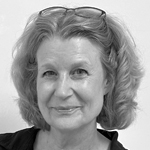
Terri Harlow
Terri Harlow is the Digital Platforms Manager at the Canadian Museum of Immigration at Pier 21, where she leads digital strategy, web and application design, and digital accessibility initiatives. With a career path that began in graphic design and progressed to front end web development, her creative direction prioritizes user experience through UI/UX heuristics and best practices. Since joining the Museum in 2009, Terri’s passion for mentoring has contributed to the growth of many who work with her, providing a path for more people to find their niche in digital museums.
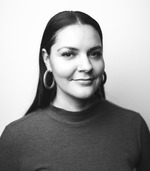
Julia Lafrenière
Julia Lafreniere (she/her), recipient of the 2023 Queen Elizabeth II Platinum Jubilee Medal, is a dedicated advocate for cultural understanding and community service. She is Michif and Anishinaabe and belongs to and is claimed by Minegozhiibe Anishinabe First Nation on Treaty 4 territory. As Head of Learning, Indigenous Ways & Equity at the Winnipeg Art Gallery since 2019, Julia leads initiatives fostering institutional understanding and bridging cultural gaps. Her impactful presentations, including at the Metropolitan Museum of Art in New York City, showcase her dedication to Indigenous knowledge integration. Julia’s leadership extends beyond her role at the gallery, consulting on transformative projects and leading CMA award-winning initiatives. She is also the Indigenous Inclusion Consultant for Equitable Solutions where she assists in developing policies that focus on staff and client safety and wellbeing. Julia holds a Masters of Arts degree in Cultural Studies from the University of Winnipeg. Her commitment to service and advocacy leaves an enduring legacy, inspiring others to join the journey towards reconciliation and equity.

Gerry Lawson
Ma̓la̓gius, Gerry Lawson is from the Heiltsuk Nation and currently manages the Oral History and Language Lab at the Museum of Anthropology at UBC. With more than 15 years of experience in the field of Information Management and Heritage Digitization, he works to develop practical, scalable resources for Indigenous cultural heritage preservation, and to decolonize information practices. Gerry also acts as the Technology Lead for UBC’s Indigitization Program and sits on the Board of Directors for the First Peoples’ Cultural Council and the Indigenous Heritage Circle.
-
- Title, Subject, Target Audience, and Relevance (total 50 points, 3 scores)
- Subject – 10 points
- Target Audience – 15 points
- Relevance – 25 points
- Storyline and Content (25 points, 1 score)
- Project Team, Schedule, and Budget (25 points, 1 score)
For tips on how to respond to each rated criteria, please refer to the sample proposal questions.
If DMC receives more proposals than can be funded, only the highest-ranking proposals (as determined by average scoring) will be considered for consensus evaluation by the Advisory Committee. Typically, proposals must receive a minimum score of 70 points to move on to the Advisory Committee.
DMC reserves the right to modify the number of proposals discussed and funded, subject to budget considerations. Should a smaller-than-expected number of proposals be received, the Advisory Committee may consider proposals with a score below 70 points.
It is the intent of DMC to proceed with consensus scoring for the top fifteen (15) proposals; however, DMC may adjust the number of proposals as it sees fit and considers reasonable for the investment program.
- Title, Subject, Target Audience, and Relevance (total 50 points, 3 scores)
Not sure if your project qualifies?
Consult our FAQ for answers.
Consult our FAQCommunity Stories
Get inspired by viewing our collection of Community Stories.
Learn more